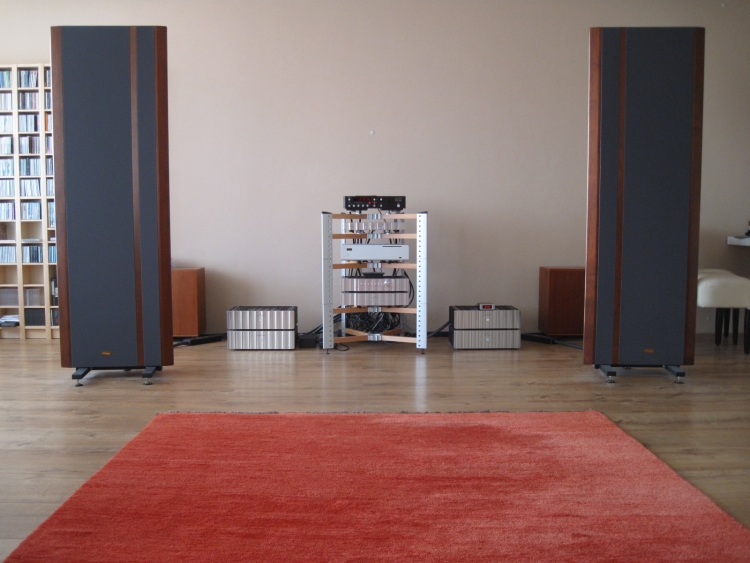
MG3.6R Planar Magnetostatic Speakers
I’ve always held off buying Magnepans. I thought that they were ugly, too large and above all judging from what I heard at audio shows, too woolly in the nether regions. But finally I caved in. After having owned Martin Logans for many years, having fallen back onto my work horses the B&W N804’s and consequently longing for more refinement, I finally took the plunge and obtained a used pair of 3.6R’s.
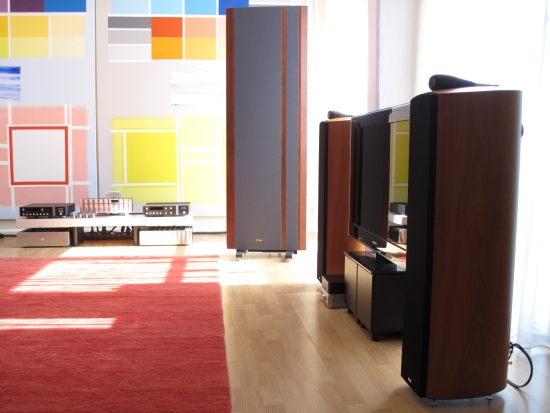
Disclaimer
Any loudspeaker is highly interactive with its environment, the room that it is placed in. In all but the most perfect rooms, you are listening to a mixture of direct speaker sound and your room, reacting to the speakers. My room is far from perfect and even though I have heard a large amount of speakers in it, my experiences need not be typical of results obtained in other rooms. At the very least though, the results as mentioned as part of comparisons with other speakers, should provide something of a starting point. Ultimately though there is just no substitute for listening to speakers in your own setup.
Magnepan MG3.6R
These speakers are HUGE. Even I had doubts in the beginning but you do get used to their size. You do need a large room. Cramming them against the wall will result in no bass and a flat soundstage. I admid: they are not speakers with a lot of WAF…
Blown away
If you have never experienced electrostatics or magnetostatics you may well be blown away by the resolving power and lack of coloration or you may also find them strange sounding if you’re used to box speakers colorations and bass-heft but just think of these kind of speakers as sounding a lot like a really good pair of headphones because they really do. But you need to set them up properly. You have to invest time into the exact placement and tilting because they respond even to milimeter differences.
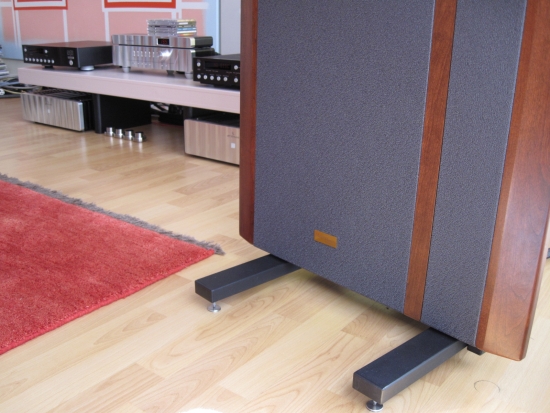
The stands pictured are seperately available from Sound Anchor. They are spiked and permit adjustment in all areas including tilt. By titling the panels you can control the clarity of the midrange and the fluidity. Tilt them toward you for a relaxed sound or have them straight up for more inner detailing and a tighter sound. Don’t underestimate the care that you will have to put in for these speakers… The devil is in the details…
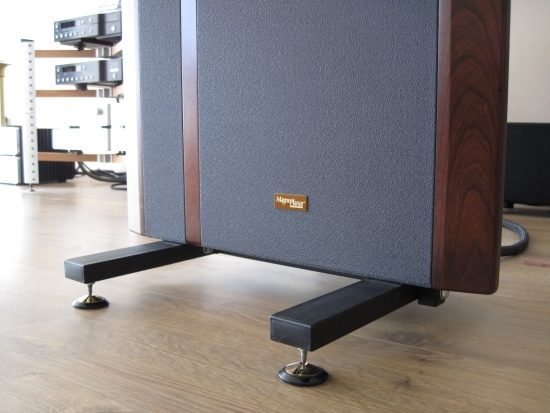
For example: the Harmonix Spike Bases as seen above made a large difference!
So what do they sound like?
The Magnepan MG3.6R’s are speakers for purists. they are for people that want to hear everything but want it presented in a friendly, musical manner. These are analytical speakers, for sure,but they also possess warmth and fluidity. They are not very frogiving of badly recorded music and when there’s a mismatch elsewhere in the chain, they will let you know about it. That said, they are not ruthless or clinical. You can also tune them to a great extent to match your personal preferences by adjusting the positioning, toe-in and tilting. The 3.6’s are much more tight in the bass and much more open in the mids than previous models. Magnepans have a reputation for being warm, friendly and rouded off sounding. Well, not the MG3.6R’s. The MG3.6’s can even sound dry and too controlled if you have them set up wrong or use electronics that are too aggressive. They need musical components. Jeff Rowland can be too relaxed for some people in some systems but with these kind of speaker these amplifiers work extremely well. They are precision instruments and need to be handled that way. They are magnificent speakers that share many aspects that are great about the Martin Logan SL3’s, but without some of the latter’s lesser sides and with a different presentation.
Magnepans are magnetostatics and can be considered a purer form of transforming electrical energy into audible energy than electrostatics but I would nevertheless call the SL3 more neutral than the MG3.6. The Magnepans are still very neutral and uncolored compared to any cabinet-speaker but have some character that is difficult to describe. You do get used to this character quickly. The Magnepans have incredible inner detail and focus, together with a massive soundstage that is wide, high and deep. They have these traits in common with the Martin Logans but they differ in some areas.
Magnepan MG3.6R versus Martin Logan SL3
The areas in which these speakers differ most obviously are Bass, treble, and imaging.
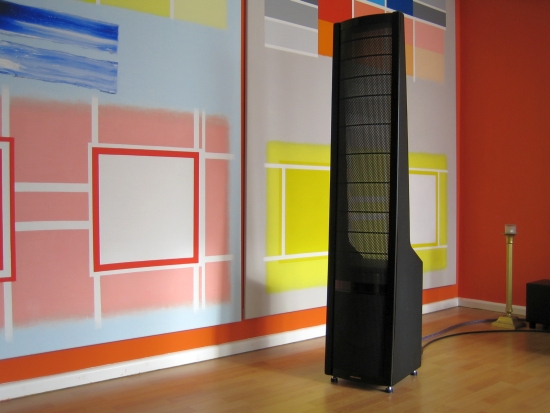
Bass
There is no woofer; this panel is fullrange and it goes surprisingly low and even remains tight, fast and controlled. So far so good, but there’s no real pressure down below. The bass is a lot like that from a Quad 988 electrostat in articulation and extension. You really need a comlimentary room to boost the bass a bit or resort to small subs, like I do for signals below 40hz.
Treble
The treble is in a league of its own. It is extremely resolving, refined and airy in a way that I have never heard from any Martin Logan (of this age). The Maggie’s treble is both fluid and lush but can also lay bare bad recordings because of its openness. The tweeter is in fact an aluminium ribbon hung between to rows of permanent magnets, to which the music signal is connected directly. There is no voice coil, no uptransforming and no circuits. Only the aluminium. The conductor is in effect the transducer.
Update 2016: current Martin Logans do sound quite airy. I now have the Ethos and although they still don’t sound quite as unrestrained and airy as true ribbon tweeters do, they definitely do not sound dark in the least.
Mids/Imaging/Soundstaging
The mids are just as detailed as those from the Martin Logans but presented in a more natural manner. Decay is better, there’s more ease and the Magnepans don’t project singers right into your lap but are instead more natural in the portrayal of the soundstage. It is big and forward when needed but not leaping at you by default. Also, and I see this as a great plus side: Despite the Logan’s curved panel, the Magnepan’s sweetspot is a lot wider. The ribbon tweeter really spreads sounds across the entire room. Even when sitting to the side or when standing up you still hear both tweeters. Like the Logans, the midrange falls off off-centre and you loose depth-imaging but nevertheless the sweetspot is now easily extended to two people as opposed to one person with the SL3’s.
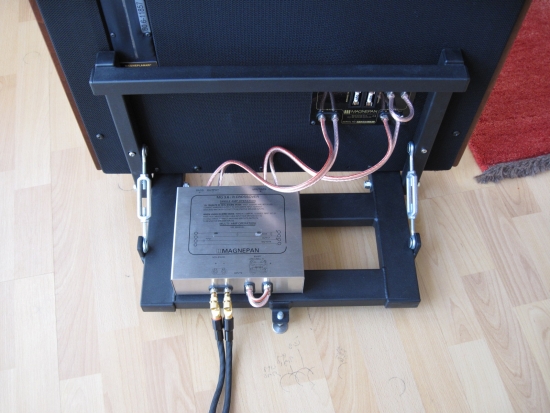
Above: External crossover. Here is a lot of room for tweaking and I did get upgraded crossovers but not until later. This review is carried out with the factory default crossovers. At the rear are two fuses which had been replaced by AHP’s by the previous owner. I know that AHP’s are very detailed but also slightly dark and a little too controlled sounding so I have ordered Hifi Tuning fuses as replacements. The HT fuses provide a much sweeter sound. Less forward, also, but less harsh as well.
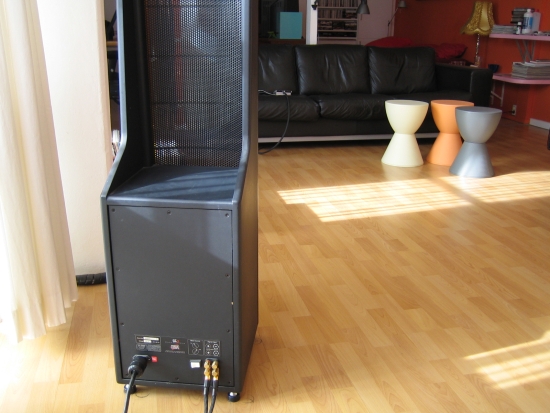
Above: Martin Logan SL3 has a closed cabinet for the bass. It really has great bass but it’s very different from the Magnepan’s.
Conclusion
Martin Logans may well be better suited for rock music: they sound more impressive and visceral, and love playing at high levels. Magnepans on the other hand are gentler and more refined, especially in the treble which is second to none. These are speakers that need great care in setup and lots of patience while finding the best position for bass performance and imaging, but they really do reward the efforts with a truly magical music presentation. They are very sensitive to tilting so you really should buy aftermarket stands that allow adjustment in this area.
Update 17 october 2009
The tweeters can be placed on the insides or the outsides, and people can’t seem to agree on this. I experimented with this myself and my conclusion is that there’s no rule written in stone here. Much depends on your taste, your listening room, listening distance, placement of the speakers and the rest of the system. Below I’ll describe the results with the two options in my system.
Tweeters inside: a more open and fluid sound with a more precise focus. Midrange is slightly more recessed, but treble is more energetic.
Tweeters outside: a more coherent and integrated sound, with a more upfront midrange. Overall slightly darker and drier, with a more analytical quality.
Update 21 may 2011
Indeed, I still have my Magnepans. I was surprised to read above that I already have had them for more than 2 years. How time flies… Recently, I tried a pair of Cardas Golden Reference speaker cables with the Magnepans, instead of my usual Transparent Reference XL cables. The results are interesting because, as it turns out, the GR cables sound much warmer than the XL’s and also less focused and rhythmic. This was surprising because I know that the Transparent is also pretty smooth and the Golden Reference is said to be very neutral yet I find it sounding much like the Golden Crosss, which is forgiving, friendly, smooth and never harsh. It is also a little slow and unprecise in the bass and lacks a little focus and definition in the midrange. Nevertheless, if you have Maggies and find them too harsh or in your face, Golden Reference cables might alleviate the problem. For me though, they weren’t as engaging as my Transparents so even though the Maggies can sometimes be a little on the dry side, I decided to stay with the Transparents. I solved the dryness with the addition of two excellent Rel Strata III subwoofers.
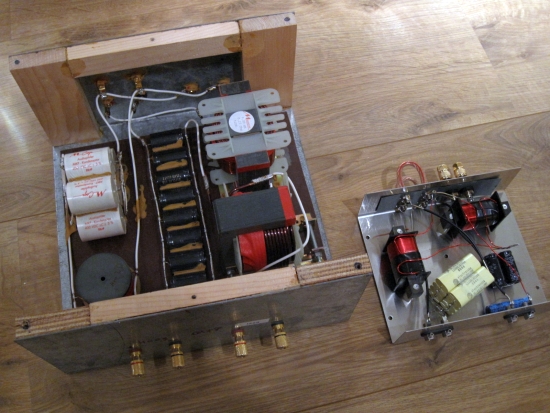
Above left: custom made crossover made exclusively with Mundorf components. Above right: original crossover.
Update 2012
A reader of this site was so kind to contact me about custom made upgrade crossovers for the MG3.6, made by Koos Schenk of TAF speakers. I was able to get the crossovers on loan while assessing them and this was very welcome as I had to get used to the different sound: much fuller bass, rounder and more sonorous, and a much more glorious midrange. But in the process the sound also felt slightly less “immediate”, or less speedy. Over time I managed to offset this with measures elsewhere in the system and it is in this guise that I have been using the speakers very happily until they were ultimately replaced with Apogee Dueatta Signatures and later Apogee Divas. Mostly, the Apogees have much more powerful bass and overall a more dynamic and “live” sound.
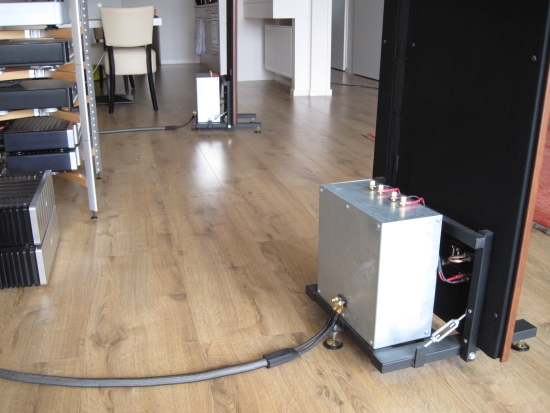
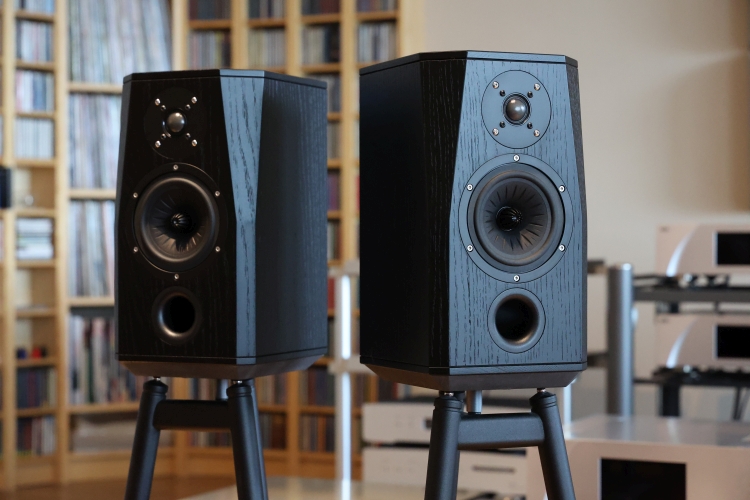
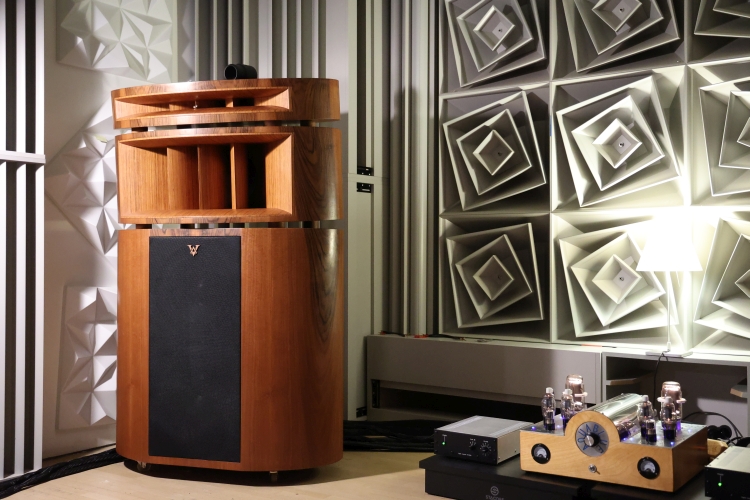
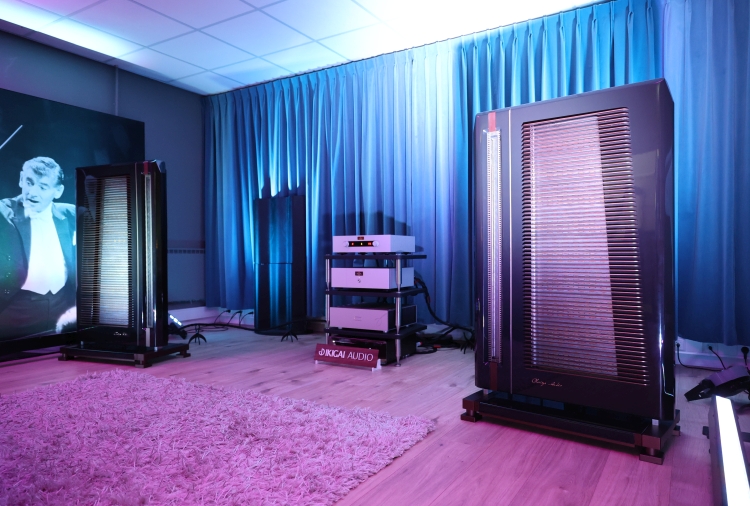
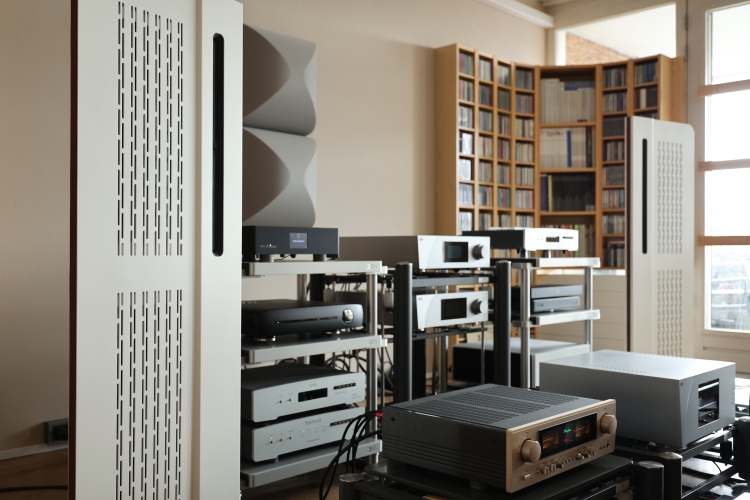
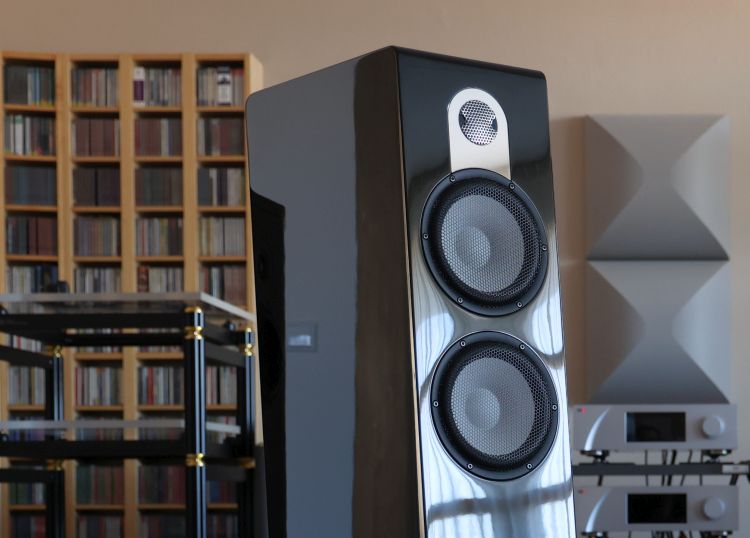
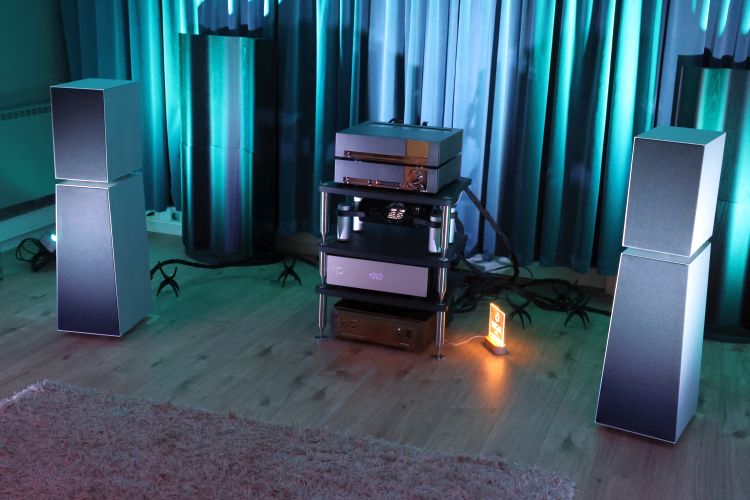
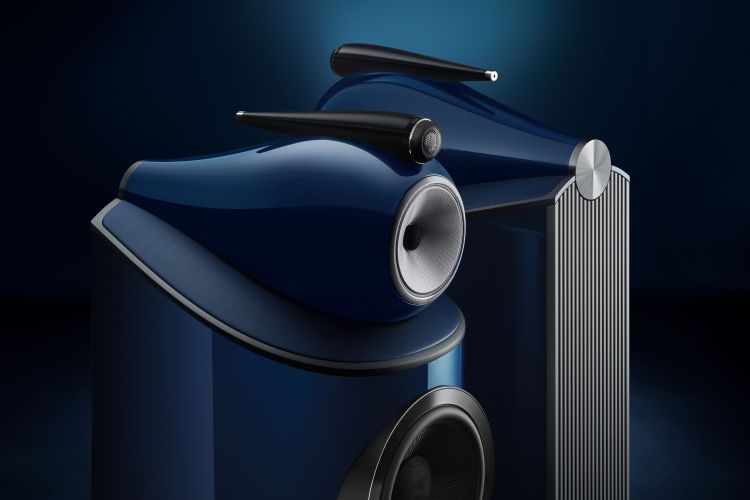
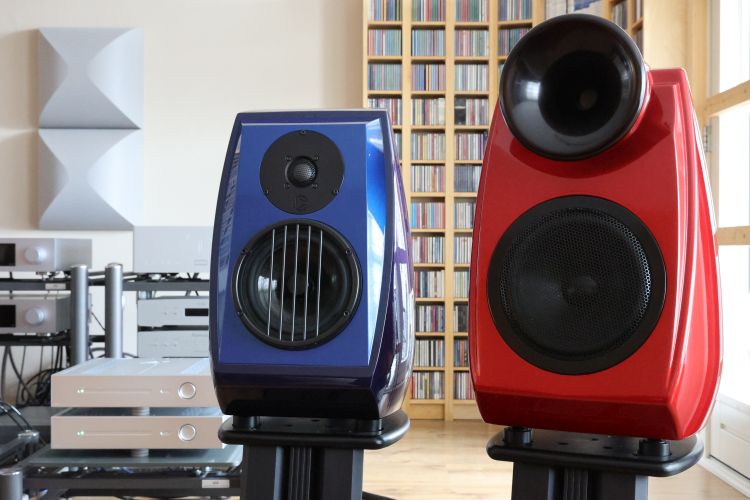
Het filter van je 3.6 heeft een upgrade gehad en behalve betere condensatoren zijn ook de spoelen vervangen. Het is over de spoelen dat ik een opmerking wil maken. Zelf heb ik de Magnepan MG20. Wat bekom je als je spoelen met een lagere interne weerstand gebruikt. Het paneel van Magnepan is resistief. In tegenstelling tot een conusluidspreker is er zowat geen elektrische demping. De extra weerstand van het spoel doet het rendement dalen maar geen impact heeft op impulsrespons. In praktijk gebruik je best luchtspoelen, die hebben de laagste vervorming maar wil je tonaal niets veranderen neem je best spoelen die dezelfde interne weerstand hebben als de originele. Als de originele een interne weerstand hebben van bv 0,8 Ohm en je vervangt die door spoelen die 0,3 Ohm interne weerstand hebben gaat het laag luider spelen en als je het eerlijk wil vergelijken moet je voor het mid-hoog een weerstand plaatsen van, in dit geval, 0,5 Ohm. Zelf heb ik ook een filter van de MG20 omgebouwd maar ik heb koperfolie spoelen in het laag gebruikt met in totaal een interne weerstand van 0,74 Ohm. Alle caps zijn Audyn Plus caps en voor het mid-hoog heb ik Jantzen koperfolie in wax spoelen gebruikt. Zo, wilde ik je meegeven, Guido